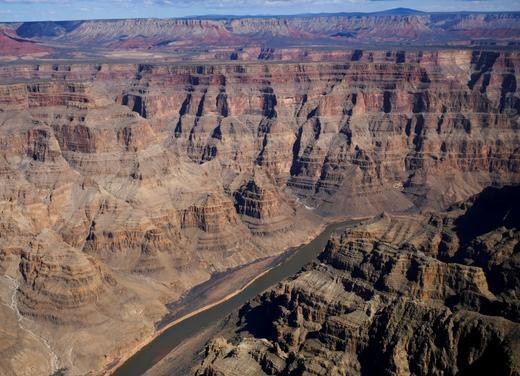Latest Study Shows The Colorado River is Drying Up

Scientists have found climate change is drying up the Colorado River.
The Colorado River provides water to more than 40 million people from Denver to Los Angeles. New research claims climate change may cause the river to lose nearly one-fourth of its slow by 2050.
Scientists found increasing temperatures affected more than half of the decline in the river's flow. Severe water shortages are expected as warming temperatures increase.
Researchers claim without changes in precipitation, the average flow of the river will drop by about 9% for every 1.8 increase in temperature. The region has already warmed by roughly 1.6 degrees Fahrenheit from the 20th to the early 21st century.
Scientists said the warmer temperature would reduce the amount of water flowing in the river by 14% to 26% by the year 2050. In a different scenario, 19% to 31% of the river's flow would be taken away by the continuously rising temperature.
The study, led by USGS scientists Chris Milly and Krista A. Dunne was published Thursday in the journal Science. The report calls for urgency in efforts to protect one of the most vital rivers in the country.
The Colorado River runs from the Rocky Mountain of Colorado and Wyoming and continues its way across the Southwest before ending on the Gulf of California. It is a source of water for about 40 million people and more than 5 acres of farmland.
A senior climate scientist at Colorado State University said the flow of water is reduced to a trickle by the time it arrives at the gulf.
The river supports around $1 trillion of all economic activity each year.
"Without this river, American cities in the Southwest would dry up and blow away," senior scientist Brad Udall said.
Previous studies estimated the decline of the river's flow at 2% to 15% for every 1 degree Celsius of warming.
Milly compared the river's flow to the leftover of a 'meal' saying, "The more that's consumed by evaporation, the less that's left for the river and the people downstream."
The river's flow was once affected by a severe drought that lasted much of the last two decades. The drought left Lake Powell and Lake Mead, its two main reservoirs, barely half full. Lake Powell is about 50% full while Lake Mead sits at 43% full.
Drought contingency plans were drawn for the three Lower Basin states and the other for the Upper Basin states of Colorado, Wyoming, Utan, and New Mexico. The plans were designed to boost the levels in the reservoirs between the years 2020 and 2026.
The Colorado River has been heavily used that the water rarely reaches the sea. Its delta found in Mexico now has only small wetlands in a stretch of desert.
Brad Udall says the only way to address the issue is to solve the cause of the problem which is climate change. He calls for the reduction of greenhouse gas emissions immediately.
"We now have the technologies, the policies and favorable economics to accomplish greenhouse gas reductions. What we lack is the will."
Subscribe to Latin Post!
Sign up for our free newsletter for the Latest coverage!















